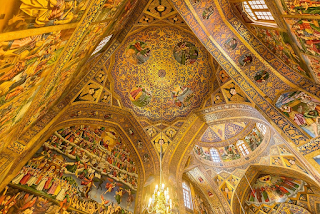What Happened to Parish Records?
I recently came across this study by Ursula Whitcher. Using data from Sultan Mehmet II’s 1455 census of taxpayers in Constantinople, she assesses Armenian strategies for adapting to Turkish rule by analyzing the characteristics of given names. The census contains 113 Armenians, mostly males. Surprisingly, Persian/Turkish names are about twice as frequent as Armenian names, and there is roughly an equal proportion of Persian and Turkish names to Armenian, Greek and Biblical names.
For those interested in continuing this line of research, we have our own comprehensive parish record of 1,422 individuals (from 371 families) who departed from Alexandretta to Beirut and Aleppo in 1928 (the second of three known migrations). The record contains the first and last names and ages of family members within 2-3 generations (grandparent, parent, child), as well as the occupation of the head of household. Without this record, I would not have been able to discover the names of my great, and great-great paternal grandfathers.
Given the usefulness and durability of parish records, it is surprising that this practice seems to have disappeared. Well, perhaps not entirely surprising, when we consider how much small communities have suffered in the last 100 years. Yet such record keeping becomes all the more important in a globalizing world where it hardly takes a few generations for people to lose touch with their culture. For example, many diaspora Armenians stop speaking their native tongue within a generation or two, and most Armenians today know little more about their history than about a few landmark events—the conversion to Christianity, the creation of the alphabet, the Battle of Avarayr and the genocide of 1915. For all its benefits, the modern world comes with its own pressures and distractions, and outside of Armenia these pressures are evidently too great for many people to make a strong commitment to upholding their culture. So beyond the distant and wishful romanticizing of Armenian culture, the books go unread, the history becomes forgotten, and the language continues to disappear.
And yet, despite this sad reality, there are many encouraging examples of people who, having lost touch with their culture, returned to uphold it more strongly. There is not a better institution to keep records of the community than the Church. In just the U.S., there are over 100 Armenian churches in over 28 states. The Church is present in about every city on earth with over a few thousand Armenians, and for all the newfound atheism in the modern world, the Armenian Church has managed to stay relatively involved in the community through baptismal, wedding and funerary rites. Can parish records become a standard (again) in our slowly disintegrating diaspora?




Comments
Post a Comment